Search Results for 'armoured car'
11 results found.
‘The girl we left behind us’

In the immediate aftermath of the recapture of Clifden by the anti-Treaty forces on Sunday 29 October 1922, the town was in a mess. Every house on Main Street had its windows and doors shattered. The streets were littered with glass as a result of explosions. In the houses opposite the barracks ‘not a picture remained on the walls, nor a piece of furniture unscathed’. Porter and spirits ‘flowed out the door’ of Lavelle’s pub. The ‘armoured car’, which had caused so much surprise, and gave cover to allow bombs to be placed, was removed and abandoned at Killery. It was noted that for the first time in living memory there were no church services in Clifden that Sunday.
Anti-Treaty forces ‘secret weapon’ helps recapture Clifden

On Saturday night, October 28 1922, a large force of anti-Treatyites made their way carefully and with as little noise as possible, into the silent streets of Clifden. They had already ‘taken’ Clifden the previous July, but were unceremoniously driven out by the National Army who approached Clifden by sea achieving total surprise.
Monsignor McAlpine would not take orders from boys he had baptised
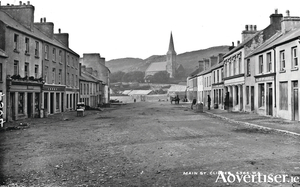
After sporadic fighting in Galway during the summer of 1922, and the occupation of some buildings in the town, including the old RIC barracks in Eglington Street, and the former Connaught Ranger barracks at Renmore, the anti-Treaty forces withdrew into Connermara, and into the east Galway countryside.
The legend of the last battle in Connemara
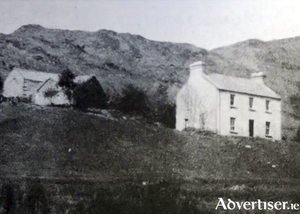
During the war of Independence the West Connemara IRA brigade, under the command of Petie McDonnell, was an effective and disciplined force. It had moved its headquarters to the Muintir Eoin residence of Pádraic Mór Ó Máille, a two-storey farmhouse, backed by rock and heather covered hills, which stood on a small rise, along the Maam to Leenane road. It offered commanding views of the Maam Valley.
The legend of the last battle in Connemara
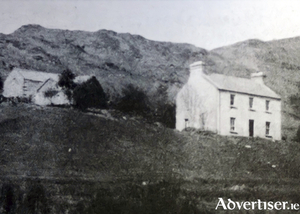
During the war of Independence the West Connemara IRA brigade, under the command of Petie McDonnell, was an effective and disciplined force. It had moved its headquarters to the Muintir Eoin residence of Pádraic Mór Ó Máille, a two-storey farmhouse, backed by rock and heather covered hills, which stood on a small rise, along the Maam to Leenane road. It offered commanding views of the Maam Valley.
Mícheál Walsh, The Old Malt
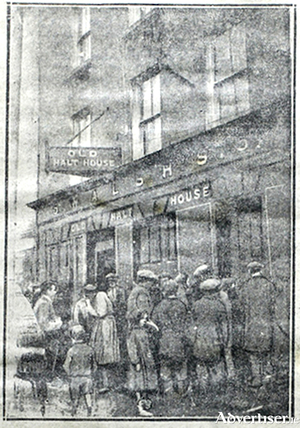
On September 22, 1920, 12 Black and Tans burst into the Old Malt Pub on High Street, breaking down the door and rushing upstairs to where Mícheál Walsh’s wife and children were sleeping. They demanded to know Mícheál’s whereabouts and then they searched the building, firing shots, exploding grenades, terrifying the children, and causing extensive damage to the property. They also broke open the safe and stole its contents, as well as taking money from the till in the bar. Clothing, alcohol, and tobacco were also stolen during the raid. The taps were opened on the barrels and then doors, cabinets, and furniture was smashed. The damage was estimated at £1,000.
Volvo armoured cars for those needing that protection
With the release of the XC90 Armoured, Volvo Cars takes another step as a manufacturer of armoured vehicles.
Grand Marshal of New York St Patrick’s Parade presented with iconic Michael Collins Rug from Foxford Woollen Mills

Mayo County Council was delighted to present the Grand Marshal of the New York City St Patrick’s Day parade, Brian O’Dwyer, with an iconic Foxford Woollen Mills Michael Collins Rug, at a function in New York on Friday March 15.
Grief and despair on Galway streets November 1920
Sunday November 21 1920, known as ‘Bloody Sunday’, marked one of the most significant events in the Irish War of Independence. The day began with an IRA operation, organised by Michael Collins, to assassinate the so called ‘Cairo Gang’ - a team of undercover British agents, working and living in Dublin. IRA members went to a number of addresses, and shot dead 14 people including nine army officers.
The Galway City Challenge Hurling Cup 1920
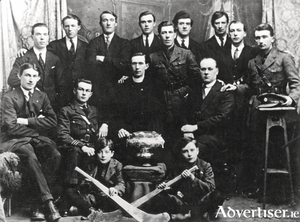
As nationalist sentiment was rising in the early years of the last century, a new generation of GAA officials emerged who were zealous in their belief in the transformative power of the GAA and they saw themselves as engaged in a project of national liberation. Some GAA tournaments were staged as part of a pro-Boer campaign. Police reports noted: “The ambition it seems to get hold of the youth of the country and educate them in rebellious and seditious ideas,” a somewhat hysterical interpretation of the GAA ban on foreign games.

